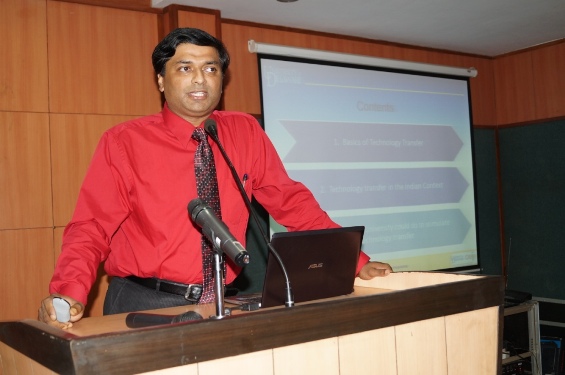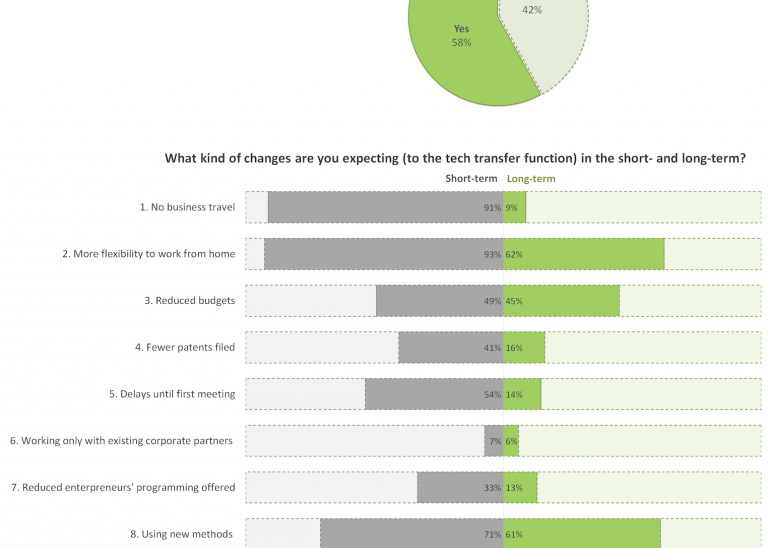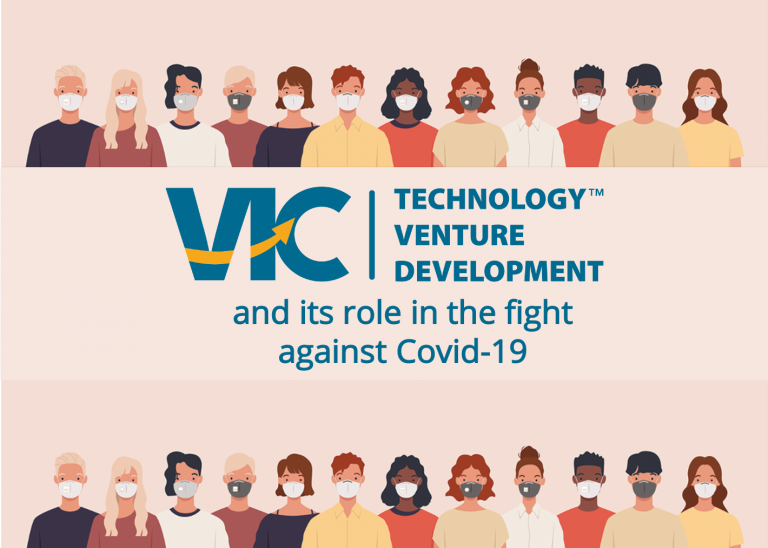Dr. Jaideep (Joy) Goswami’s research team at the University of Delaware’s Office of Economic Innovation and Partnerships is focused on empowering innovators and commercializing university research. Goswami is the Assistant Director of Technology Transfer and is active in technology licensing, facilitating startup creation, and university-industry collaborations. He is passionate about the innovation potential between universities and industry R&D.

We interviewed Joy to learn more about technology commercialization and the licensing process at University of Delaware.
Jonathan Lillian: You recently spoke about getting research faculty engaged and motivated in the innovation and commercialization process.
How has OEIP’s approach to technology transfer changed in the several years you have spent at University of Delaware?
Joy Goswami: As you know, over the last few years there has been a general awareness of the importance of innovation, tech transfer and entrepreneurism in sustaining economic revival and growth.
With the decline of corporate research, universities are being asked to fill the void and play a central role in our knowledge-centric economy by the transfer of technologies originating from inventions. As a result, universities, including my own, are adapting by ‘pushing’ their faculty members to embrace research that is more translational in nature and may have better market appeal.
Many researchers believed that filing for a patent would preclude them from publishing the same work in a scientific journal… Or that if a researcher had already published their invention, they could never get patent protection for their invention.
The reality is that both of these situations may not be entirely true.
A mechanism most universities consider implementing to enable this ‘push’ is faculty incentives; which are meant to motivate them to engage in translational research. This is done by altering policy – making patenting and commercialization activities by faculty count toward promotion & tenure, providing financial rewards from royalty distribution generated from licensing of faculty’s IP, helping faculty in raising sponsored research dollars from industrial partners, or by assisting faculty with starting up businesses.
Such changes are obviously not easy to make, since they involve central stakeholders (that is, faculty members), to change their mindset and culture from their conventional academic research.
When I arrived, our approach was slowly evolving from a classical model. Many faculty investigators did not understand the significance of the knowledge-centric role, and the importance of invention, disclosure and patenting process and its role in technology commercialization. So, we made it our mission to educate our faculty and dispel any misconceptions through outreach efforts within campus.
JL: But Joy, UDEL has standard written procedures for disclosure and royalty sharing on the university policies, right? I would assume that this would mean that the incentivizing process is clear to faculty. What kinds of misunderstandings did you find?
JG: Yes, technically you are right. The information is available, but not necessarily well understood due to common misconceptions regarding various aspects of the commercialization process.
For example, regarding patent protection, many researchers believed that filing for a patent would preclude them from publishing the same work in a scientific journal… Or that if a researcher had already published their invention, they could never get patent protection for their invention.
The reality is that both of these situations may not be entirely true.
Similarly, another misunderstanding that exists among investigators is that once a technology has been licensed to a company, they will be excluded from doing further research on it, which is almost never true.
“The quantity and quality of invention disclosures are on the rise. We have also seen an all time high in faculty startups this year, which is heartening.”– Jaideep (Joy) Gaswami, University of Delaware
Among others, we find that the distribution of royalty from a licensed technology may not be well understood by simply reading the policy and often has to be further explained to pertinent investigators.
JL: How do you go about remedying these misunderstandings?
JG: Most of the misunderstandings are clarified through our periodic outreach efforts within campus and one-on-one discussions with researchers.
Regarding and inventor getting research access to technologies that have been licensed to companies for example: We explain to them that our standard license agreements have a carve-out clause for continued use of the patent for non-commercial purposes, including ongoing research. We also explain that in addition to the carve-out for use in future research, most industry licensees actively seek – or even need – access to the investigators for their invaluable know-how of the technology.
From the university’s perspective, granting access to know-how as part of the license, and adds value to the license itself. Furthermore it allows us to provide assurance to the inventors that they would likely stay in continued contact with their invention and improvements if permitted by the corporate partner.
We are careful to avoid unintended consequences arising from misunderstandings of royalty sharing.
We make it explicit that, unless altered upon mutual consent, the default distribution of all royalties is in equal proportion amongst all inventors listed in the invention disclosure or patent. The inventors appreciate the fact that while they are not obligated to pay for any expense related to legal expenses or fees associated with the patent filing, and they get rewarded with royalty payouts upon the receipt of license revenues!
JL: So, did these programs motivate your faculty researchers who have shied away from commercialization or entrepreneurship in the past?
JG: The response has been fairly positive so far. Our office tracks our performance on a periodic basis and we are seeing a significant improvement on various metrics.
The quantity and quality of invention disclosures are on the rise. We have also seen an all-time high in faculty startups this year, which is heartening.
We hope that the trend continues and the word regarding our performance spreads throughout the University research community to motivate additional investigators visit our office and share their innovations.
Joy Goswami is the Assistant Director of the Office of Economic Innovation and Partnerships, where he oversees and manages technology transfer activities and corporate relations for the University of Delaware. Among his other roles, Joy is actively involved in managing intellectual property, assisting in establishing start-up and spin-off companies and bringing forth university-industry collaborations & partnerships.
Joy has more than eighteen years of experience in the field of business development and a career that has produced highly regarded commercialization strategies and outreach practices of novel technologies in the biotechnology, agriculture and bio-medical sector. He is a Registered Patent Agent for the US Patent & Trademark Office and has assisted inventors to successfully obtain numerous US and international patents through issuance. He is also a Small Business Innovation Research (SBIR/STTR) reviewer for the National Institutes of Health (NIH) and a Howard Bremer Scholar, conferred by the Association of University Technology Managers (AUTM). He is a regular speaker, author and trainer at various technology commercialization seminars and workshops. He is currently an active member of The Association of University Technology Managers (AUTM) and the Licensing Executive Society (LES). Joy earned his Bachelor’s and Master of Science in Biology from Delhi University South Campus, and his MBA from the Herberger’s College of Business, St. Cloud State University, Minnesota. He earned his Registration as a Technology Transfer Professional (RTTP) from the Alliance of Technology Transfer Professionals.



